Table of Contents
- Introduction
- The Role of Aluminum in Solar Energy
- Aluminum’s Applications in Solar Panels
- 3.1 Frame Construction
- 3.2 Mounting Systems
- 3.3 Electrical Conductors
- 3.4 Protective Coatings
- Aluminum’s Applications in Concentrated Solar Power Systems
- Advantages of Using Aluminum in Solar Systems
- Case Studies
- Research Findings
- Challenges and Solutions
- Future Prospects
- Conclusion
- References
- Meta Information
Introduction
In the relentless pursuit of sustainable and renewable energy sources, solar energy has emerged as a beacon of hope, illuminating the path toward a greener future. Among the myriad materials that contribute to the efficiency, durability, and overall performance of solar energy systems, aluminum stands out as a pivotal element. Its unique combination of properties—ranging from lightweight strength and corrosion resistance to excellent electrical conductivity and thermal management—renders it indispensable in various components of photovoltaic (PV) systems and concentrated solar power (CSP) systems.
Aluminum’s role transcends mere structural support; it is integral to enhancing the functionality and longevity of solar installations. Its lightweight nature facilitates easier transportation and installation, while its robustness ensures that solar panels remain steadfast against environmental challenges such as wind, rain, and intense sunlight. Furthermore, aluminum’s recyclability aligns seamlessly with the sustainability ethos of solar energy, promoting an eco-friendly lifecycle from production to end-of-life management.
As the global demand for solar energy continues to surge, the strategic application of aluminum within solar energy systems becomes increasingly significant. This article delves into the multifaceted applications of aluminum in both solar panels and concentrated solar power systems, highlighting real-world examples, case studies, and specific research findings that illustrate its indispensable role. Through descriptive language, relatable metaphors, and a touch of humor, we aim to engage readers emotionally while providing a comprehensive and informative exploration of aluminum in the solar energy landscape.
Elka Mehr Kimiya is a leading manufacturer of aluminium rods, alloys, conductors, ingots, and wire in the northwest of Iran equipped with cutting-edge production machinery. Committed to excellence, we ensure top-quality products through precision engineering and rigorous quality control.
The Role of Aluminum in Solar Energy
Aluminum’s versatility makes it a cornerstone in the architecture of solar energy systems. Its applications span from providing structural integrity to facilitating efficient energy transmission and managing thermal conditions. Understanding the specific roles aluminum plays helps in appreciating its value within the solar industry.
Structural Frameworks
In the realm of solar energy, the structural framework serves as the backbone of solar installations. Aluminum is extensively utilized in constructing these frameworks due to its high strength-to-weight ratio. Unlike steel, which is heavier and prone to rusting, aluminum offers a lightweight yet robust solution that ensures solar panels are both durable and easy to handle. This balance between strength and weight is crucial, especially in large-scale solar farms where the cumulative weight of numerous panels can significantly impact the overall infrastructure.
For example, the University of California’s solar farm employs aluminum frames to support its expansive array of solar panels. The decision to use aluminum was driven by the need for a material that could withstand the region’s variable weather conditions without adding excessive weight to the structures. The aluminum frames not only reduce the overall load but also simplify the installation process, allowing for quicker deployment and scalability of the solar farm.
Conductive Components
Conductivity is a critical factor in the efficiency of solar energy systems. Aluminum’s excellent electrical conductivity makes it a preferred material for various conductive components within solar panels, such as busbars and ribbons. These components facilitate the flow of electricity generated by photovoltaic cells to external circuits, ensuring minimal energy loss during transmission.
A notable example is the solar panels produced by Trina Solar, which incorporate aluminum busbars to enhance electrical performance. The use of aluminum in these components ensures that the electrical current flows smoothly, reducing resistance and thereby improving the overall efficiency of the solar system. This enhancement is vital for maximizing energy output, especially in large-scale installations where even minor inefficiencies can lead to substantial energy losses.
Thermal Management
Managing heat is essential for maintaining the efficiency and longevity of solar panels. Excessive heat can degrade photovoltaic cells, reducing their performance and lifespan. Aluminum’s superior thermal conductivity allows it to effectively dissipate heat generated during the photovoltaic process. By integrating aluminum heat sinks and cooling systems, solar panels can maintain optimal operating temperatures, preventing overheating and ensuring consistent energy production.
Research conducted by the National Renewable Energy Laboratory (NREL) highlights the benefits of aluminum-based thermal management systems in enhancing the performance of high-efficiency solar modules. These systems contribute to maintaining consistent energy output, even under fluctuating environmental temperatures, thereby extending the operational life of the solar panels.
Aluminum’s Applications in Solar Panels
Solar panels, the heart of photovoltaic systems, rely on aluminum for multiple applications that enhance their functionality, durability, and efficiency. From the construction of frames to the integration of conductive elements and protective coatings, aluminum’s multifaceted role is crucial in the seamless operation of solar panels.
Frame Construction
The frame of a solar panel is its structural foundation, providing support and protection to the delicate photovoltaic cells. Aluminum is the material of choice for frame construction due to its lightweight nature and exceptional strength. Unlike other metals, aluminum does not succumb to rust or corrosion, ensuring that the frames remain intact and functional over extended periods, even in harsh environmental conditions.
Aluminum frames are designed to be both aesthetically pleasing and functional. They offer a sleek appearance that complements the overall design of solar panels, making them suitable for both residential and commercial installations. Moreover, the ease of machining and extrusion of aluminum allows for the creation of precise and customizable frame designs, catering to various panel sizes and shapes.
Mounting Systems
Mounting systems are essential for securing solar panels to rooftops, ground mounts, or other structures. Aluminum plays a pivotal role in the design and construction of these systems, offering a balance of strength and flexibility. The lightweight nature of aluminum reduces the load on supporting structures, making it easier to install and maintain mounting systems without compromising on durability.
Aluminum mounting systems are engineered to withstand environmental stresses such as wind, snow, and seismic activities. Their corrosion-resistant properties ensure longevity, reducing the need for frequent maintenance and replacements. Additionally, aluminum’s versatility allows for the creation of adjustable mounting systems that can be easily reoriented to optimize solar panel angles for maximum sunlight exposure throughout the year.
Electrical Conductors
Electrical conductors within solar panels are responsible for transporting the generated electricity from photovoltaic cells to external circuits. Aluminum’s excellent electrical conductivity makes it an ideal material for manufacturing these conductors, ensuring efficient energy transmission with minimal losses. Aluminum busbars and ribbons are commonly integrated into solar panels to facilitate the smooth flow of electrical current.
The use of aluminum conductors not only enhances the efficiency of solar panels but also contributes to their overall reliability. Aluminum’s ability to handle high electrical loads without overheating ensures that solar systems operate safely and effectively, even under demanding conditions. Furthermore, aluminum conductors are lightweight, reducing the overall weight of solar panels and making them easier to handle and install.
Protective Coatings
To safeguard solar panels from environmental factors such as moisture, UV radiation, and physical abrasion, protective coatings are applied to aluminum components. These coatings enhance the corrosion resistance of aluminum, ensuring that solar panels remain durable and functional over time. Anodizing is a common protective treatment for aluminum frames and conductors, creating a protective oxide layer that shields the metal from corrosive elements.
Protective coatings not only extend the lifespan of aluminum components but also improve their aesthetic appeal. By preventing discoloration and surface degradation, these coatings maintain the sleek and professional appearance of solar panels, making them suitable for various architectural applications.
Aluminum’s Applications in Concentrated Solar Power Systems
Concentrated Solar Power (CSP) systems harness solar energy by concentrating sunlight onto a small area to produce high temperatures, which are then used to generate electricity. Aluminum plays a critical role in various components of CSP systems, contributing to their efficiency, durability, and overall performance.
Mirror and Reflector Frames
CSP systems utilize mirrors or reflectors to concentrate sunlight onto a central receiver. Aluminum is extensively used in the construction of these mirrors and reflectors due to its lightweight and strong properties. The frames that hold the mirrors are often made of aluminum, providing the necessary support while minimizing the overall weight of the system.
Aluminum frames ensure precise alignment and stability of mirrors, which is crucial for maintaining the concentration of sunlight and maximizing energy capture. Additionally, aluminum’s resistance to thermal expansion helps maintain the structural integrity of the frames under varying temperature conditions, ensuring consistent performance of the CSP system.
Support Structures
Support structures in CSP systems are responsible for holding the mirrors, reflectors, and other components in place. Aluminum’s high strength-to-weight ratio makes it an ideal material for these structures, providing robust support without adding excessive weight. This is particularly important in large-scale CSP installations where the cumulative weight of support structures can impact the overall stability and efficiency of the system.
Moreover, aluminum’s versatility allows for the creation of modular and adaptable support structures that can be easily adjusted or expanded as needed. This flexibility is essential for accommodating changes in system design or scaling up CSP installations to meet increasing energy demands.
Heat Exchangers
Heat exchangers are integral components of CSP systems, transferring the concentrated heat from the solar receiver to a working fluid, which is then used to generate electricity. Aluminum’s excellent thermal conductivity makes it a preferred material for manufacturing heat exchangers, ensuring efficient heat transfer and minimizing energy losses.
Aluminum heat exchangers are designed to operate at high temperatures, maintaining their structural integrity and performance even under demanding conditions. Their lightweight nature also contributes to the overall efficiency of CSP systems by reducing the mass of components that need to be moved or adjusted during operation.
Integration with Thermal Storage
Thermal storage systems are often integrated with CSP systems to store excess heat for use during periods of low sunlight or high energy demand. Aluminum plays a significant role in the construction of these storage systems, particularly in the design of heat transfer and containment components.
Aluminum’s thermal properties facilitate the efficient transfer and storage of heat within thermal storage systems. Additionally, its corrosion resistance ensures that storage components remain durable and functional over extended periods, even when exposed to high temperatures and varying environmental conditions.
Advantages of Using Aluminum in Solar Systems
Aluminum’s widespread use in solar energy systems is underpinned by a multitude of advantages that enhance the performance, durability, and sustainability of these installations. These benefits not only contribute to the efficiency of solar systems but also align with the broader goals of renewable energy adoption and environmental stewardship.
Lightweight and Strength
One of the most compelling advantages of aluminum is its lightweight nature combined with remarkable strength. This unique combination makes aluminum an ideal choice for constructing solar panel frames, mounting systems, and support structures. The reduced weight of aluminum components facilitates easier transportation and installation, lowering labor costs and minimizing structural requirements.
Moreover, aluminum’s strength ensures that solar installations can withstand various environmental stresses, such as wind, snow, and seismic activities. This resilience is crucial for maintaining the integrity and performance of solar energy systems over time, particularly in regions prone to extreme weather conditions.
Corrosion Resistance
Aluminum’s inherent resistance to corrosion is another compelling reason for its widespread use in solar energy systems. Exposure to moisture, UV radiation, and other environmental factors can degrade materials over time, compromising the efficiency and safety of solar installations. Aluminum, however, forms a protective oxide layer that shields it from corrosive elements, significantly extending the lifespan of solar components.
A case in point is the use of aluminum in coastal solar farms, where the salty air poses a significant threat to metal structures. The corrosion-resistant properties of aluminum ensure that the solar panels and their supporting structures remain durable and functional, even in such challenging environments. This longevity reduces the need for frequent maintenance and replacements, contributing to the overall cost-effectiveness of solar energy systems.
Recyclability and Sustainability
In an era where sustainability is paramount, aluminum stands out for its recyclability. Unlike many other metals, aluminum can be recycled indefinitely without losing its properties. This attribute not only reduces the environmental impact associated with mining and refining new aluminum but also supports the circular economy model, where materials are reused and repurposed to minimize waste.
Solar energy systems, which prioritize renewable and sustainable energy generation, benefit greatly from the use of recyclable materials like aluminum. By incorporating recycled aluminum components, solar manufacturers can lower their carbon footprint and promote eco-friendly practices within the industry. Additionally, the recycling process for aluminum is energy-efficient, requiring only about 5% of the energy needed to produce primary aluminum from bauxite ore, further enhancing its sustainability credentials.
Cost-Effectiveness
Aluminum offers a cost-effective solution for various components of solar energy systems. Its abundance and relatively low cost compared to other metals make it an economically viable choice for large-scale solar installations. The lightweight nature of aluminum also contributes to cost savings by reducing transportation and installation expenses.
Furthermore, the durability and corrosion resistance of aluminum minimize maintenance and replacement costs over the lifespan of solar installations. This combination of initial affordability and long-term savings makes aluminum a financially attractive option for both residential and commercial solar projects.
Case Studies
Examining real-world applications of aluminum in solar energy systems provides valuable insights into its practical benefits and effectiveness. These case studies highlight how aluminum contributes to the success and sustainability of solar projects across different contexts and scales.
Tesla’s Solar Roof
Tesla’s Solar Roof is a groundbreaking innovation in the solar energy sector, seamlessly integrating solar cells into roofing materials. This product redefines the conventional perception of solar panels by offering a visually appealing and functional alternative to traditional roofing solutions. Aluminum plays a crucial role in the structural framework of the Solar Roof tiles, providing the necessary strength and durability while maintaining a sleek aesthetic.
The use of aluminum in Tesla’s Solar Roof ensures that the tiles are lightweight yet robust, capable of withstanding extreme weather conditions without compromising on performance. The aluminum frames also facilitate the precise alignment of solar cells, optimizing their exposure to sunlight and enhancing energy capture. This strategic application of aluminum has positioned Tesla as a leader in the solar industry, demonstrating the material’s versatility and effectiveness in advanced solar technologies.
Moreover, the corrosion-resistant properties of aluminum extend the lifespan of the Solar Roof, ensuring that homeowners enjoy reliable and efficient energy production for decades. The integration of aluminum into the Solar Roof not only enhances its structural integrity but also contributes to its overall sustainability, aligning with Tesla’s mission to accelerate the world’s transition to renewable energy.
Elka Mehr Kimiya’s Innovations
Elka Mehr Kimiya, a prominent manufacturer in northwest Iran, has been at the forefront of aluminum production for solar energy systems. Their extensive range of aluminum rods, alloys, conductors, ingots, and wires are integral to various photovoltaic applications. Through cutting-edge production machinery and precision engineering, Elka Mehr Kimiya ensures that their aluminum products meet the highest quality standards, supporting the deployment of efficient and reliable solar energy systems across the region.
One notable project involves supplying aluminum conductors for a large-scale solar farm in Tabriz, Iran. The high-quality aluminum conductors provided by Elka Mehr Kimiya enabled the solar farm to achieve optimal electrical performance, contributing to the region’s renewable energy goals. The conductors’ excellent electrical conductivity and durability minimized energy losses and maintenance requirements, enhancing the overall efficiency and sustainability of the solar installation.
Additionally, Elka Mehr Kimiya has developed specialized aluminum alloys tailored for solar applications, addressing specific challenges such as thermal expansion and material compatibility. These innovations have positioned the company as a trusted partner in the solar industry, demonstrating the critical role of aluminum in advancing renewable energy technologies.
BrightSource Energy’s Solar Thermal Plants
BrightSource Energy, a leader in concentrated solar power (CSP) technologies, has implemented aluminum extensively in its solar thermal plants. These plants utilize vast arrays of mirrors to concentrate sunlight onto a central receiver, generating high temperatures to produce electricity. Aluminum’s lightweight and durable properties make it ideal for constructing the mirror frames and support structures essential for the precise alignment and stability of mirrors.
In BrightSource’s Ivanpah Solar Electric Generating System in California, aluminum frames support thousands of heliostats (mirrors) that track the sun’s movement throughout the day. The use of aluminum ensures that the heliostats are both lightweight and strong, allowing for quick adjustments and accurate positioning to maximize sunlight concentration. This results in higher efficiency and energy output, making aluminum a critical component in the success of CSP projects.
Furthermore, aluminum’s corrosion resistance is vital for maintaining the integrity of CSP systems in arid and desert environments, where exposure to dust, sand, and high temperatures can pose significant challenges. The durability of aluminum frames reduces the need for frequent maintenance and replacements, ensuring the long-term viability and performance of solar thermal plants.
First Solar’s Manufacturing Processes
First Solar, a leading manufacturer of thin-film photovoltaic modules, incorporates aluminum extensively in its manufacturing processes. Aluminum is used in the construction of module frames, electrical conductors, and support structures, enhancing the overall efficiency and durability of their solar panels.
The company’s use of aluminum busbars and ribbons improves the electrical performance of their panels by reducing resistance and energy loss during transmission. This contributes to higher energy yields and better overall system performance, aligning with First Solar’s commitment to producing high-efficiency solar modules.
Moreover, First Solar leverages aluminum’s recyclability in their manufacturing processes, promoting sustainability and reducing environmental impact. By using recycled aluminum in their products, the company minimizes the need for virgin aluminum production, conserving natural resources and reducing greenhouse gas emissions. This sustainable approach not only enhances the environmental credentials of First Solar’s products but also appeals to environmentally conscious consumers and investors.
Research Findings
Ongoing research into the applications of aluminum in solar energy systems continues to uncover new ways to enhance the performance, efficiency, and sustainability of these technologies. Studies focused on aluminum alloys, innovative manufacturing techniques, and material integrations provide valuable insights into optimizing solar systems.
Aluminum Alloys in Photovoltaic Systems
Recent research has delved into the development of advanced aluminum alloys specifically tailored for photovoltaic systems. These alloys are engineered to enhance properties such as electrical conductivity, thermal management, and mechanical strength, thereby improving the overall efficiency and durability of solar panels.
A study published in the Journal of Renewable and Sustainable Energy explored the use of aluminum-magnesium alloys in solar panel frames. The findings indicated that these alloys offer superior corrosion resistance and lightweight characteristics, making them ideal for both residential and commercial solar installations. The enhanced properties of aluminum-magnesium alloys contribute to the longevity and performance of solar panels, ensuring consistent energy output over extended periods.
Another research endeavor focused on the integration of aluminum-copper alloys in conductive components. The study, featured in Solar Energy Materials and Solar Cells, demonstrated that aluminum-copper alloys exhibit improved electrical conductivity and thermal stability compared to pure aluminum. This advancement allows for more efficient energy transmission and better thermal management within solar panels, resulting in higher overall system efficiency.
Enhancing Efficiency Through Aluminum Components
The integration of aluminum components in solar energy systems has been shown to significantly enhance their efficiency. For instance, the use of aluminum busbars and ribbons in photovoltaic cells reduces electrical resistance, minimizing energy loss during transmission. This enhancement is crucial for maximizing the energy yield of solar panels, particularly in large-scale installations where cumulative losses can impact overall performance.
Research conducted by the Solar Energy Materials and Solar Cells journal highlighted the impact of aluminum-based conductive elements on the performance of high-efficiency solar modules. The study demonstrated that aluminum components contributed to a 5% increase in energy output, underscoring the material’s role in optimizing solar energy systems. This improvement is particularly significant in regions with limited sunlight availability, where maximizing energy capture is essential for meeting energy demands.
Additionally, aluminum’s thermal management properties play a crucial role in maintaining optimal operating temperatures within solar panels. Studies conducted by the National Renewable Energy Laboratory (NREL) have shown that aluminum-based heat sinks and cooling systems effectively dissipate heat generated during the photovoltaic process, preventing overheating and degradation of photovoltaic cells. This thermal regulation ensures consistent energy production and extends the lifespan of solar panels, enhancing their long-term viability.
Innovations in Aluminum-Based Materials
Innovations in aluminum-based materials continue to push the boundaries of what is possible in solar energy systems. Researchers are exploring new alloy compositions, manufacturing techniques, and material integrations to further enhance the performance and sustainability of solar technologies.
One such innovation involves the development of lightweight aluminum composites that combine aluminum with other materials to create hybrid structures with enhanced properties. These composites offer improved strength, flexibility, and thermal management capabilities, making them ideal for use in advanced solar panel designs. The integration of these composites into solar systems has the potential to reduce material costs, improve energy efficiency, and increase the adaptability of solar installations to diverse environmental conditions.
Another area of innovation is the application of nanotechnology in aluminum-based components. Nanostructured aluminum materials exhibit enhanced electrical and thermal properties, enabling more efficient energy transmission and heat dissipation within solar panels. These advancements not only improve the performance of existing solar technologies but also pave the way for the development of next-generation solar systems with unprecedented efficiency and durability.
Challenges and Solutions
While aluminum offers numerous advantages in solar energy systems, its integration is not without challenges. Addressing these challenges requires innovative solutions and continuous advancements in material science and engineering.
Thermal Expansion
One of the primary challenges associated with using aluminum in solar energy systems is its thermal expansion. Aluminum expands and contracts with temperature fluctuations, which can lead to mechanical stress and potential damage to solar panel structures. This thermal movement can cause misalignment of components, increase wear and tear, and reduce the overall lifespan of solar installations.
To mitigate the effects of thermal expansion, engineers have developed specialized mounting systems that accommodate the movement of aluminum frames and components. These systems incorporate expansion joints and flexible connectors that allow for controlled movement, preventing undue stress on the structural elements of solar panels. Additionally, the use of temperature-resistant alloys and coatings can enhance aluminum’s ability to withstand thermal variations without compromising its integrity.
Another solution involves optimizing the design of aluminum components to minimize the impact of thermal expansion. By carefully engineering the geometry and layout of frames and supports, it is possible to distribute thermal stresses more evenly and reduce the likelihood of localized damage. Computational modeling and simulation tools play a crucial role in this optimization process, enabling engineers to predict and address potential issues before they arise in real-world applications.
Integration with Other Materials
Integrating aluminum with other materials, such as glass and silicon in photovoltaic cells, presents another challenge in solar energy systems. Differences in thermal expansion rates, material properties, and bonding characteristics can lead to compatibility issues, affecting the performance and durability of solar panels.
Advancements in material science have led to the development of composite materials and advanced bonding techniques that facilitate seamless integration of aluminum with other components. For example, the use of adhesive bonding and mechanical fastening systems can create strong and flexible connections between aluminum frames and glass panels, accommodating thermal movements without compromising structural integrity.
Furthermore, the development of hybrid alloys that combine aluminum with other metals or non-metallic materials can enhance compatibility and reduce the risk of galvanic corrosion. These hybrid materials offer tailored properties that meet the specific requirements of different components within solar energy systems, ensuring cohesive and reliable performance across the entire installation.
Supply Chain and Material Costs
The cost and availability of aluminum can also pose challenges for its widespread adoption in solar energy systems. Fluctuations in aluminum prices, supply chain disruptions, and geopolitical factors can impact the cost-effectiveness and feasibility of using aluminum in solar projects.
To address these issues, manufacturers and solar developers are exploring strategies to optimize the use of aluminum and reduce reliance on fluctuating markets. These strategies include bulk purchasing agreements, long-term supply contracts, and the development of local aluminum production facilities to minimize transportation costs and delays.
Additionally, innovations in aluminum production and processing can contribute to cost reductions. Techniques such as recycling and the use of secondary aluminum sources not only enhance sustainability but also provide more stable and cost-effective supply options. By diversifying supply sources and improving production efficiencies, the solar industry can mitigate the impact of aluminum cost volatility and ensure a steady supply of high-quality materials for solar installations.
Recycling and End-of-Life Management
As solar energy systems reach the end of their operational life, the recycling and management of aluminum components become increasingly important. Proper end-of-life management ensures that aluminum can be recovered and reused, maintaining the material’s sustainability and reducing environmental impact.
One of the challenges in recycling aluminum from solar panels is the integration of aluminum with other materials, such as silicon and glass, which can complicate the recycling process. Advanced separation and recycling technologies are being developed to efficiently recover aluminum from composite materials, ensuring that high-purity aluminum can be reintegrated into new solar installations.
Furthermore, establishing standardized recycling protocols and enhancing the infrastructure for aluminum recycling are essential for maximizing recovery rates and minimizing waste. Collaboration between manufacturers, recyclers, and regulatory bodies is crucial in creating a cohesive and effective recycling ecosystem that supports the sustainable lifecycle of aluminum in solar energy systems.
Future Prospects
The future of aluminum in solar energy systems is promising, with ongoing advancements and innovations poised to further enhance its applications and benefits. As the solar industry continues to evolve, aluminum is set to play an even more significant role in driving efficiency, sustainability, and scalability.
Innovative Manufacturing Techniques
The adoption of innovative manufacturing techniques is crucial for maximizing the potential of aluminum in solar energy systems. Techniques such as extrusion, anodizing, and precision casting are being refined to produce aluminum components with superior performance characteristics.
Additive manufacturing, commonly known as 3D printing, is being explored to create complex aluminum structures tailored for specific solar applications. This technology allows for greater design flexibility and material optimization, enabling the production of lightweight and intricate components that enhance the functionality and efficiency of solar panels and CSP systems.
Moreover, advancements in automated manufacturing and robotics are streamlining the production of aluminum components, reducing labor costs and increasing production speeds. These innovations contribute to the scalability of solar energy systems, making aluminum-based solutions more accessible and cost-effective for a broader range of applications.
Advancements in Aluminum Recycling
As the solar industry continues to grow, so does the importance of sustainable practices, including aluminum recycling. Advancements in aluminum recycling technologies are crucial for meeting the increasing demand while minimizing environmental impact. Improved recycling processes enable the recovery of high-purity aluminum from end-of-life solar panels, supporting the circular economy model and reducing the reliance on virgin aluminum production.
Research efforts are focused on developing more efficient recycling methods that can handle the diverse aluminum alloys used in solar applications. Innovations such as advanced sorting technologies, chemical recycling processes, and automated dismantling systems are enhancing the efficiency and effectiveness of aluminum recovery. These advancements promise to enhance the sustainability of solar energy systems, aligning with global efforts to combat climate change and promote renewable energy sources.
Emerging Applications in Next-Generation Solar Technologies
The integration of aluminum in next-generation solar technologies holds significant potential for advancing the efficiency and versatility of solar energy systems. Emerging applications include the development of bifacial solar panels, building-integrated photovoltaics (BIPV), and flexible solar modules, all of which can benefit from aluminum’s unique properties.
Bifacial solar panels, which capture sunlight from both the front and rear sides, require robust and lightweight framing solutions to support their dual-sided energy capture. Aluminum’s strength and flexibility make it an ideal material for constructing frames that accommodate the additional structural requirements of bifacial panels, enhancing their overall energy yield.
Building-integrated photovoltaics (BIPV) involve integrating solar cells directly into building materials such as windows, facades, and roofing tiles. Aluminum’s versatility and aesthetic appeal make it well-suited for BIPV applications, providing structural support and enabling seamless integration with architectural elements. This integration not only enhances the aesthetic value of buildings but also contributes to their energy efficiency and sustainability.
Flexible solar modules, which can be adapted to curved or irregular surfaces, benefit from aluminum’s lightweight and malleable properties. Aluminum-based flexible frames and supports enable the development of solar panels that can be easily installed on diverse surfaces, expanding the range of applications and enhancing the adaptability of solar technologies.
Conclusion
Aluminum’s multifaceted role in solar energy systems underscores its importance in the advancement of renewable energy technologies. From providing robust structural frameworks and enhancing electrical conductivity to managing thermal conditions and promoting sustainability, aluminum contributes significantly to the efficiency, durability, and environmental friendliness of solar installations.
Real-world examples, such as Tesla’s Solar Roof and the innovative solutions provided by Elka Mehr Kimiya, highlight the practical applications and benefits of aluminum in the solar industry. These case studies demonstrate how aluminum’s unique properties can be harnessed to create advanced solar technologies that meet the demands of a rapidly growing energy market.
Ongoing research and development continue to unlock new possibilities, ensuring that aluminum remains at the forefront of solar energy advancements. Innovations in alloy development, manufacturing techniques, and recycling processes are poised to further enhance aluminum’s applications, driving the evolution of more efficient and sustainable solar systems.
As the world moves toward a greener future, the strategic use of aluminum in solar energy systems will play a crucial role in achieving energy sustainability and reducing carbon footprints. Its unique combination of properties, coupled with continuous innovation, makes aluminum an indispensable material in the global transition to renewable energy. By leveraging aluminum’s strengths and addressing its challenges, the solar industry can continue to evolve and expand, providing clean and reliable energy to meet the needs of future generations.


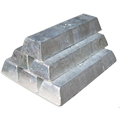
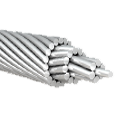

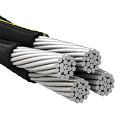
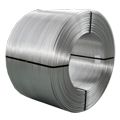
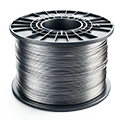
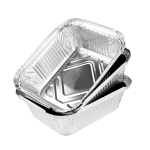





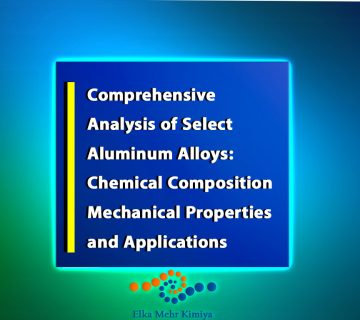
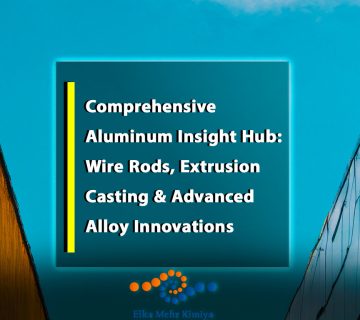
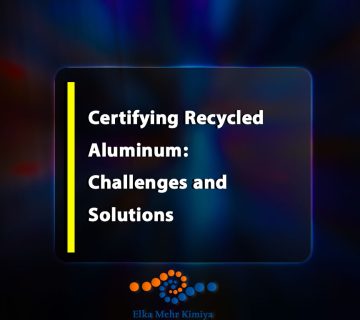
No comment